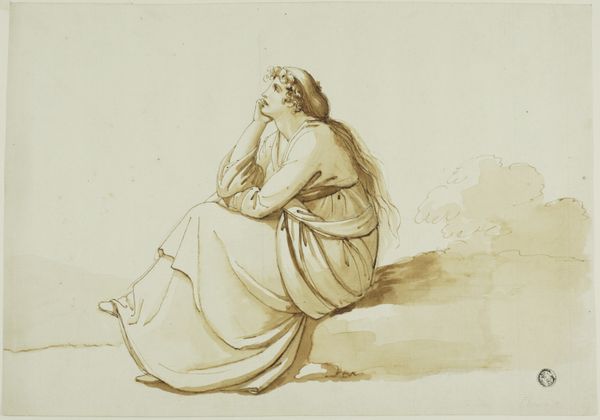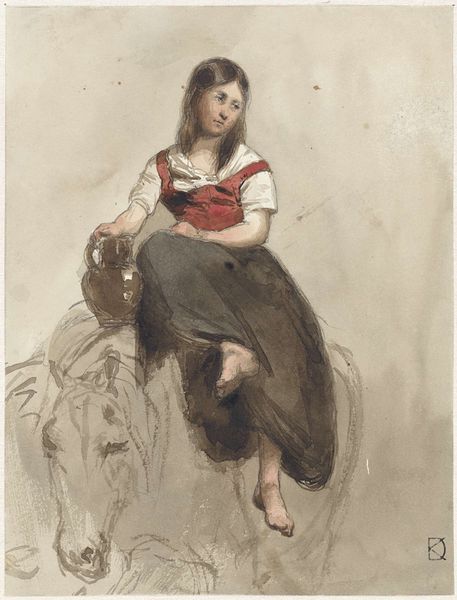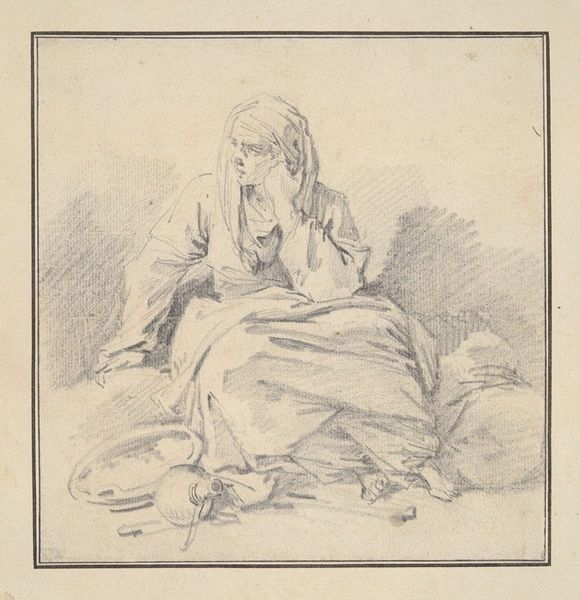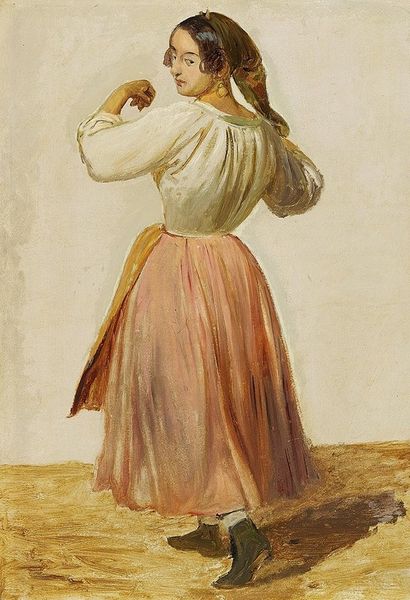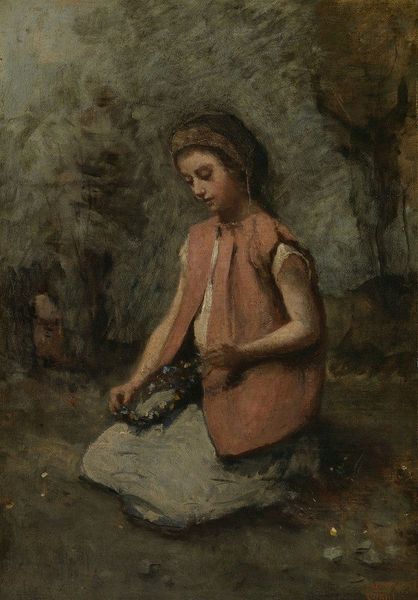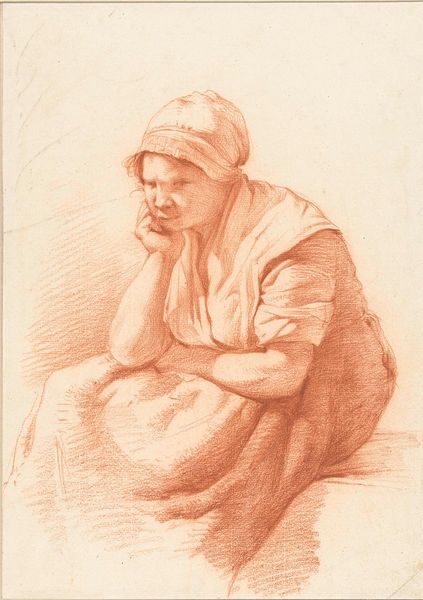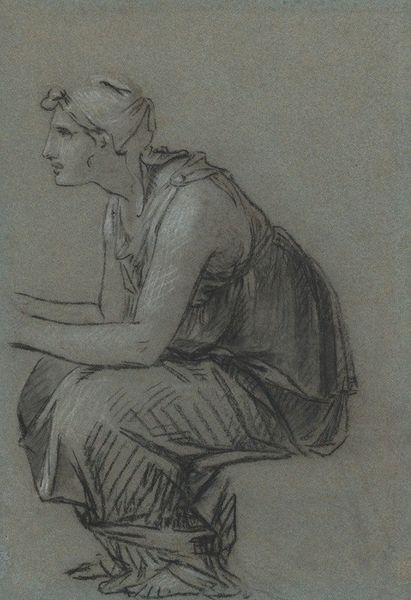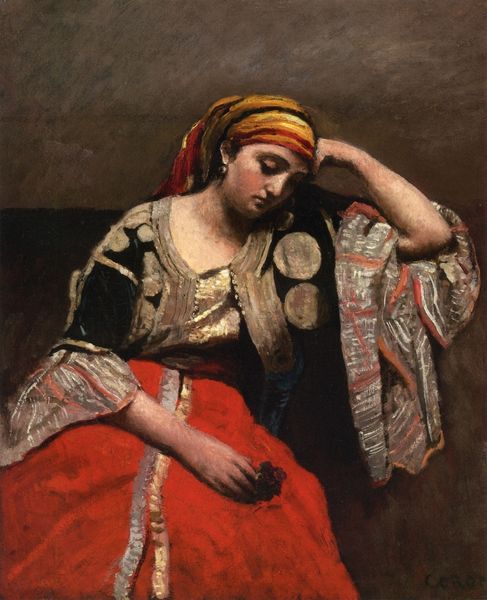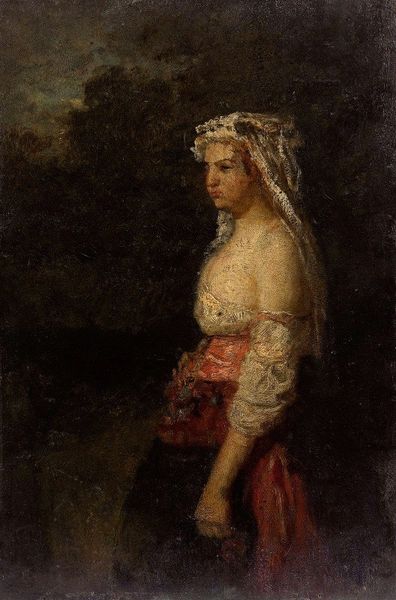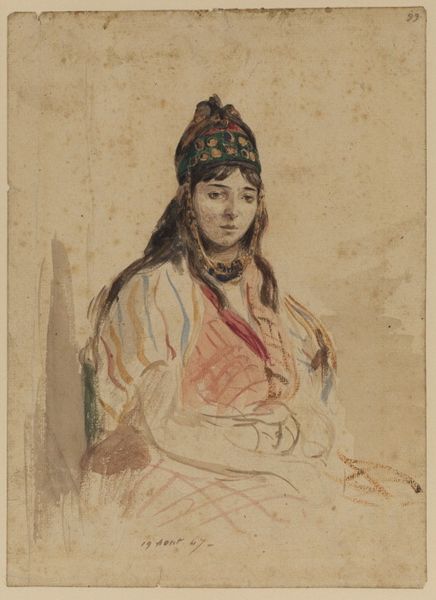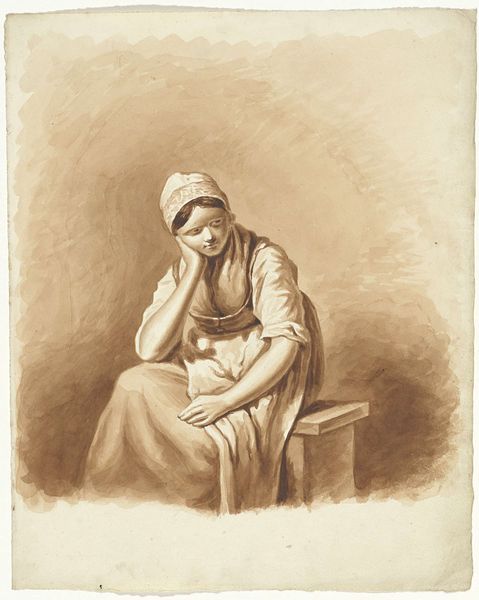
watercolor
#
portrait
#
figuration
#
watercolor
#
costume
#
watercolour illustration
#
genre-painting
#
watercolor
#
realism
Dimensions: 34.3 x 24.7 cm
Copyright: Public domain
Editor: So, here we have Carl Haag’s “In Thoughtful Pose,” a watercolor piece, although it's undated. I'm really struck by the woman’s expression; it conveys a sense of quiet contemplation, almost melancholy. How do you interpret this work? Curator: It’s interesting to consider the potential power dynamics inherent in the representation of women during Haag’s time, especially within the context of realism. The “thoughtful pose” is, perhaps, a construct, inviting a male gaze onto the inner life, or rather, a speculated inner life, of a woman. Does her costume tell you anything? Is it exoticizing? Editor: The costume does seem a little romanticized, not necessarily something someone would wear every day. Is it problematic to portray people from different cultures in what could be seen as a stereotypical way? Curator: Absolutely. Realism, while seemingly objective, is always mediated by the artist's perspective, shaped by their own cultural biases and the social climate in which they work. Consider how the very act of observing and depicting someone from a different background can perpetuate power imbalances and reinforce stereotypes, consciously or unconsciously. Editor: So it's not enough just to see what's on the surface; we have to think about who is looking and why. I see what you mean. Curator: Precisely. Haag may have intended a respectful portrait, but the historical context requires us to critically examine the potential for orientalism or other forms of cultural appropriation. By questioning the portrayal and intent, we can open up a dialogue about representation, cultural exchange, and power. Editor: I hadn’t really thought about it that deeply. I was stuck on the surface-level beauty and the quiet mood, but now I see the need to unpack all of the complex things it may mean to different people. Curator: Exactly, and it is important that the dialogue about problematic elements of artwork should exist; these considerations provide us a chance to understand how perceptions and cultures changed over the centuries.
Comments
No comments
Be the first to comment and join the conversation on the ultimate creative platform.

